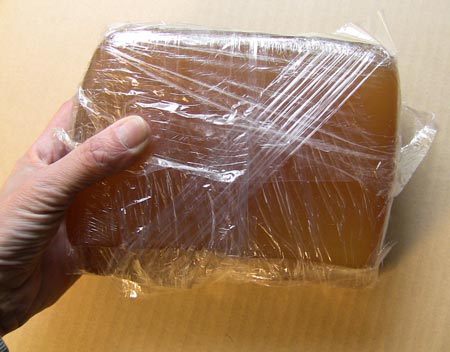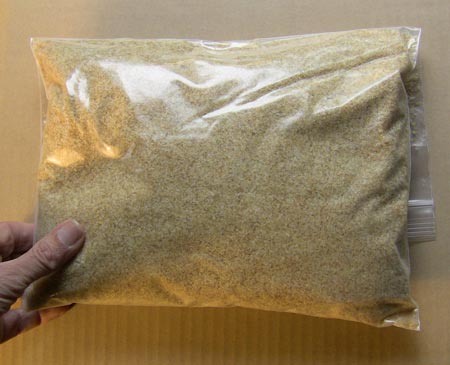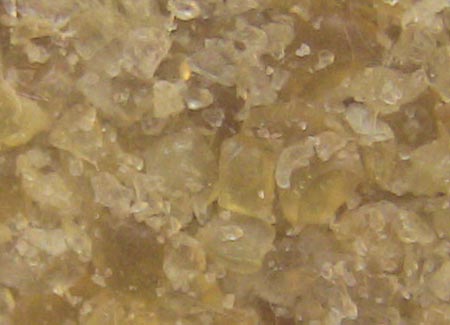Posted by Dave Bull at 6:23 AM, May 3, 2011 [Permalink]
It has been nearly a year since I made the decision to take on the job of sizing the paper for my printmaking. As I wrote early last year, the quality of the sizing work from the professional workshop I was using had degraded to the point where the paper was becoming unusable, so I felt that I had no choice. Last summer I prepared some tools and materials, made some initial experiments, and since then have been sizing the paper batch by batch for each particular job that comes up. So far, so good. Problem faced, problem basically solved.
But a couple of months ago I got a phone call from printer Numabe-san that seemed to put me back to square one.
He was calling to let me know that he had just heard that the prime company supplying nikawa ( 膠 ), Japanese gelatine glue [reference], had gone out of business. When I didn't react particularly strongly to this news - after all, I hear that sort of thing all the time - he reformulated it, saying something to the effect of, "Dave, you don't understand. Not just the major nikawa supplier, the only one."
Even so, at first I didn't quite believe him. After all, nikawa is used in many other fields, not just printmaking. It is very important in Japanese traditional painting, lacquer work, doll making, etc. and etc. Surely this was not a case of a company folding because of a lost market. But it turned out that his news was correct. I called Misawa-san - the man who used to do my sizing - and he at first thought that this news was not credible, and that I must have misunderstood. He called back not ten minutes later; it was true. The company, his only supplier, had disappeared, and without giving him a chance to stock up.
That was all some months ago, and since then this news has buzzed and buzzed around the world of traditional crafts in Japan. Nobody seems to know just what happened, but it also seems quite clear that the company isn't coming back. Phone calls to all sources of nikawa all meet with the same response, "Sorry, nothing here".
I have on hand enough nikawa to last me (probably) to the end of the Mystique series, although if I use some of it for the new Senshafuda project, it may not actually last that long. Time for Plan B.
And Plan B might actually be quite simple. A million years ago, give or take a few years, I used to make guitars. As is the habit with violin makers (as I understand it), at least one 'face' of the instrument has to be glued in place with a reversible glue, to allow access to the interior of the instrument for maintenance and repairs. The glue for this has traditionally been one or another of the various hide glues, with 'rabbit skin glue' being the most common. I remember these quite well, and it seems to me that the composition of those glues was not all that different from our nikawa.
A bit of online research seems to confirm this; they are all basically the same thing - animal collagens. When used as glue, they are obviously mixed in a stronger form than we do for sizing, but it certainly does seem to be the same basic product.
So I searched a few overseas suppliers of materials for musical instrument makers, found some hide glues, and placed some orders. A couple of the samples have now arrived, and - here we go again! - when it comes time to size the paper for Mystique #13 in a week or so, I'll have to do some tests with these to see if they seem suitable.
Here's a rubbery five-pound 'cake' of hide glue:

And ten pounds (love those funny units the US suppliers all use!) of a granulated hide glue.

In closeup:

I would certainly like to have a lot more information on just what these glues are made from (as in which animals, etc.), but given that there is no such information available for our nikawa for comparison, I suppose it doesn't much matter. (That granular one in particular is pretty much identical to my packages of nikawa in structure, feel and smell.)
But of one thing I am very glad - that I had a chance to get a good bit of experience at doing my own paper sizing before this crisis developed. If I were now starting completely from scratch, I honestly wouldn't know where to start ...
More later, as the situation develops!

